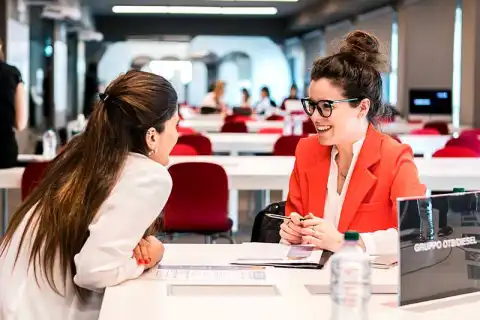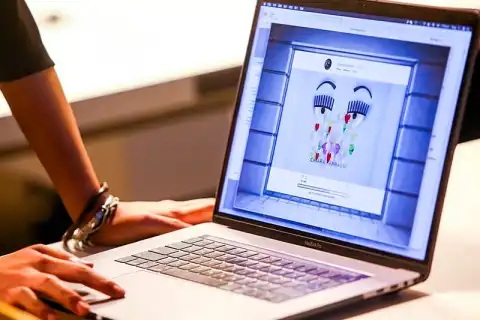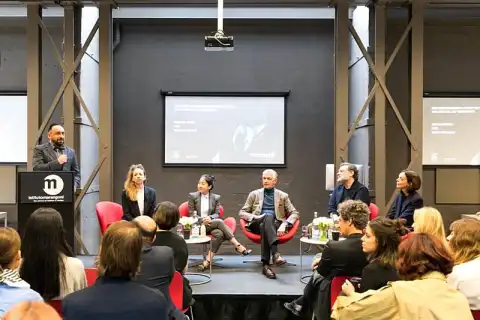Bachelor of Arts (Hons) - Multimedia Arts
- 3 years
- Duration
- 14,600 EUR/year
- Price
- September
- Start
- June
- Deadline
- Bachelor
- Degree
- Campus
- Format
- Florence / Italy
- Location
- The Istituto Marangoni
- School
Program description
The program's goal is to build artist abilities within the framework of the modern art, fashion, media, and communication systems. To build a personal perspective on the reality of visual communication and novel methods of seeing art, it is important to focus on the world of technology, which is something that this approach encourages.
Program structure
Year 1
- Style, History of Art and Costume
- Technique and technologies for visual arts
- Photography
- Theory of Perception and psychology of shapes
- Digital application for Art
- Visual Communication Design methodology
- Image phenomenology
- Foreign language
- Free Study Activities
Year 2
- New media aesthetic
- History of contemporary art
- Cinema and audiovisual theory and analysis
- Introduction to video production
- Sound Design
- Multimedia Languages
- Digital modeling techniques
- Free Study Activities
Year 3
- Economy and art market
- Multimedia Planning
- Design of Sound Spaces
- Multimedia Installations
- Visual art aesthetic
- Interactive systems
- Information for arts: tools and methods
- Internship
- Dissertation
Price
Fee for two semesters (1 year) is 14600.00 EUR for international students.
Enrollment Fee — 4000.00 EUR.
Requirements for applicants
To apply, the following documents are required:
- Copy of high school diploma or equivalent;
- Signed personal statement (motivational letter);
- For non English/Italian native speakers: certificate of language skills, level b1 of Common European Framework of Reference with specific requirements (e.g. IELTS 4.5 without elements below 4.0);
- Completion of entry test
*Entry Test for creative courses: applicants are requested to submit 6 self-produced Creative Ideas and a skills test consisting of 4 multiple-choice questions. The Creative Ideas can be anything that visually describes their inspiration and the area of study that they have chosen. They can be submitted in the form of sketches, drawings, photographs, moodboards and collages (the 6 creative ideas might also be a mix of these). They can also be:
- personal reinterpretations of objects, environments, people, situations, etc..
- design ideas: representations of personal creations such as outfits/fashion collections, objects, furniture pieces, interior spaces, etc. (according to the desired course you are applying to).
All items must be submitted in A4 or A3 format, in .pdf,.tiff, .jpg, .zip.
The Admissions Manager coordinates and supports the subject specific Programme Leader and the Director of Education in dealing with interviews and portfolio assessments (where appropriate).
(Admission requirements are subject to change in order to comply with entry requirement regulations).
About the university

In 1935, Milanese tailor Giulio Marangoni established Istituto, which by 1942 had evolved into the Scuola Professionale Artistica. While the school's focus was initially on educating pattern makers and seamstresses, it shifted to fashion design, product development, and marketing in the 1970s and 1980s.
The Istituto Marangoni is an exclusive fashion and design institute in Italy.
Milan, in Lombardy, is the institute's headquarters; it also has outposts in Florence, London, Paris, Shanghai, Shenzhen, Mumbai and Miami.
The university has partnerships with more than 4,500 global brands and businesses, giving students and alums access to a wealth of resources and opportunities. As a result of the school's close relationships with businesses on a worldwide and local scale, it is able to help current students and alums map out a career path that is tailored to their specific interests and aspirations within the fields of management and business.
Istituto Marangoni's Italia campuses teaches all of the Institute's core curricula:
- Fashion Courses
- Design Courses
- Art courses
Career services help students connect with possible employers, make business connections, and get internship experience.
By the time they graduate, practically all students have designed multiple collections for the Milan Fashion Show. Students visit profile displays, trading floors, presentations, and podium demonstrations as part of the curriculum.





